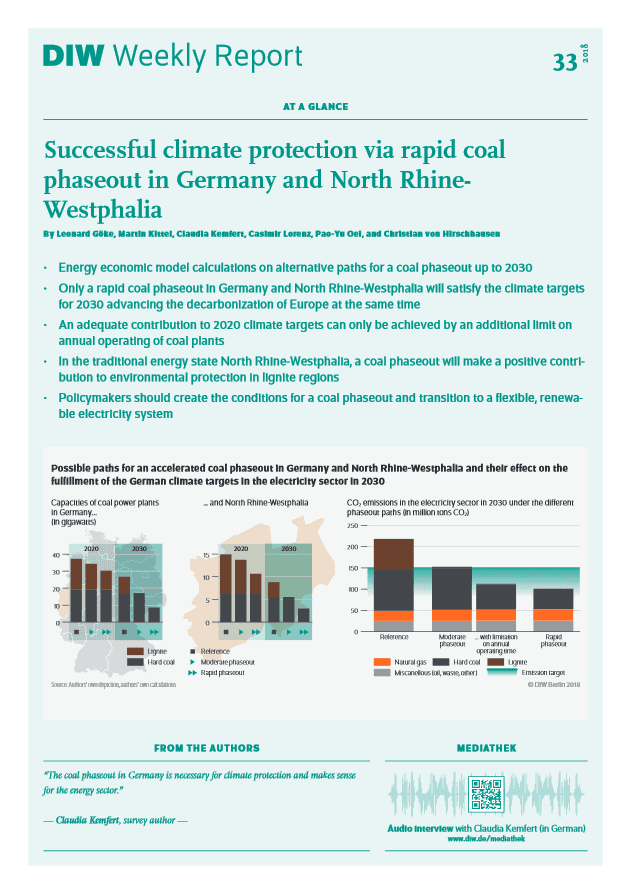Scenarios for the Coal Phase-out in Germany – A Model-Based Analysis and Implications for Supply Security

Power generation from lignite and hard coal was responsible for more than a quarter of German greenhouse gas emissions in 2016. Of all federal states, North Rhine-Westphalia is by far the largest carbon emitter. The Growth, Structural Change and Regional Development Commission (also known as “Coal Commission”) among others are currently debating alternative pathways toward a coal phaseout to achieve the national climate targets. The Coal Commission has been tasked with submitting specific recommendations by the end of 2018. Supported by detailed model calculations, the present study shows that a rapid reduction in coal-fired power generation nationwide and in North Rhine-Westphalia is necessary to meet the climate targets in 2030. According to the German government’s climate protection plan, emissions in the energy sector must fall by about 60 percent as compared to 1990. The analysis also shows that a German phaseout promotes decarbonization and the expansion of renewable energies throughout Europe. And in North Rhine-Westphalia, a rapid coal phaseout will be necessary to meet the climate protection targets. All lignite power plants and many plants that run on hard coal could be shut down by 2030. The phaseout of lignite mining in NRW could be designed such that surface mine Garzweiler II would no longer engulf any villages; the forest in the Hambach surface mine that is worth conserving would also be saved.